Fine feathers make fine birds, says an old proverb, and it applies to many more aspects than a human look. Just think about your website – it’s like a business card. You want your potential clients to perceive it as neat, well-organized, and elegant. The impression that the website makes may greatly influence their decision to buy your product or use your services.
That’s why it’s crucial to regularly take a deeper look at the visuals on your website. Where do you start? A visual brand audit. Here’s what it is and how to perform it:
What is a brand visual audit?
A brand visual audit is a check-up that allows you to assess the coherence of visual elements such as logos, fonts, website design, or colors. It reveals potential inconsistency, user experience inconveniences, and branding lacks.
Maintaining consistency becomes increasingly difficult as your online presence grows and you constantly add new pages and content. Thanks to a brand audit, you’ll be able to spot oversights and improve the overall perception of your brand. In fact, the way you see your website may greatly stand out from what users experience while visiting.
Conducting a brand visual audit is a great way to bring together all your team members and help them better understand your brand’s goals and direction.
How to perform a visual audit?
Doing a brand visual audit will show you how your business is performing and detect pain points that can damage your sales, conversions, and website traffic. I can say that there is no ideal brand. But what you can do is to make it better than it is right now.
According to Score.org, your brand audit should include these three vital areas:
- External branding: Logo, visuals, and brand messaging;
- Internal branding: Key values, brand’s mission and culture;
- Customer experience: Customer support, user experience, and sales processes.
Take into account all these things and follow these 8 steps below to do a brand visual audit and get solid results from it:
1. Define the purpose of your brand audit
When conducting a brand audit, you need to define what needs to be analyzed. Maybe you want to analyze your website, your social media activities, or all together. You can take help from different tools for branding analysis. There are different reasons for auditing your brand.
Firstly, you may want to perform a regular check-up on consistency. It’s essential to do so after significant changes in your team or if you experienced a significant drop in traffic or conversions.
Secondly, if you plan to redesign your branding or website completely, it’s best to start by auditing what worked in the past and what requires an immediate change. A visual brand audit will help you choose the right direction.
Finally, you may want to optimize the visual content of your website for a better user experience (UX). To do so, you should consider the overall aesthetics of your website and technical aspects such as the format and size of posted pictures.
To better understand that you need to audit, you can use the mind map to draw out your ideas and questions about your company.
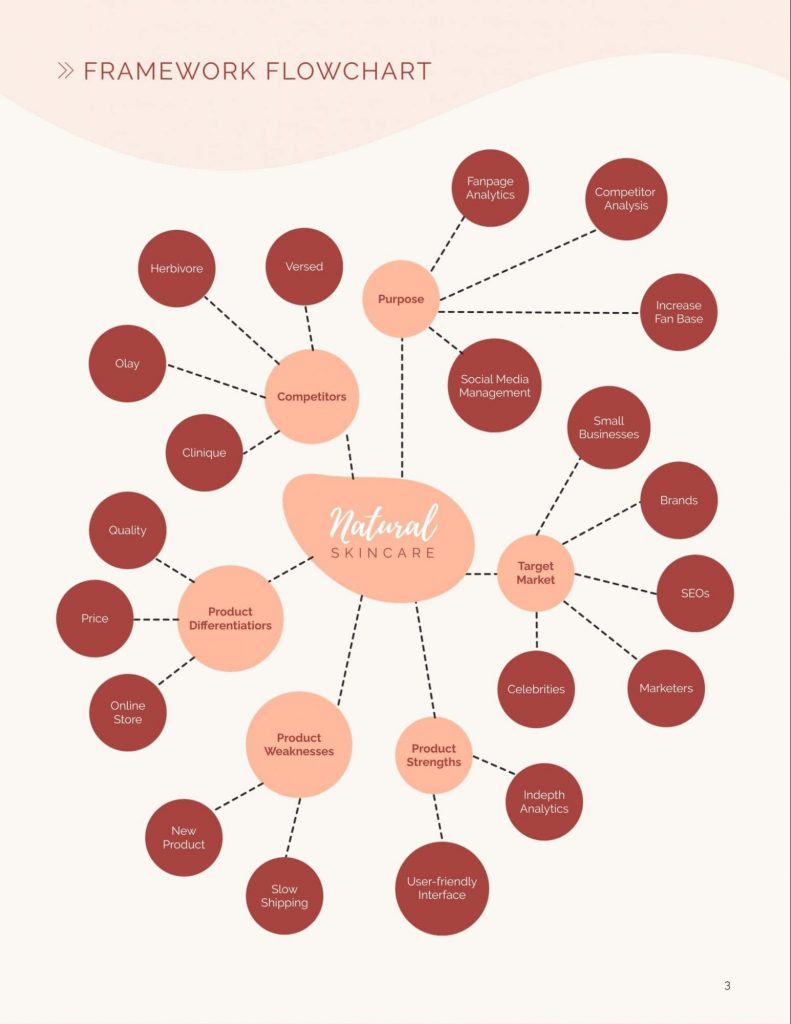
2. Evaluate the status of your website
Take time to evaluate the current status of your website. Pay special attention to branding; check if it’s consistent across all pages. Analyze the colors, fonts, pictures, and overall style of the visual content.
Next, evaluate the loading time of your website and think about the ways to improve it. You can do so by uploading pictures in the .jpg format, reducing the size of your images, and giving up on heavy .gif files. As a result, you’ll see a significant improvement in the bounce rate.

It’s highly advisable to dig deeper; you should ask yourself if the website is mobile responsive and whether the visual content ranks in Google. Once you evaluate the current status of your visual assets, you’ll have a clear basis for future improvements.
Broc Newman from Mission Personal Injury Lawyers, PC recommends conducting a SWOT analysis as a part of your brand audit. This is a great way to find out your strengths, weaknesses, possibilities, and issues around your brand.
Pro tip: If you start a new project or want to rebrand your company, Namify will be a huge help for you to find a great brand name available in your niche. It suggests multiple brand name ideas based on your industry and keywords.
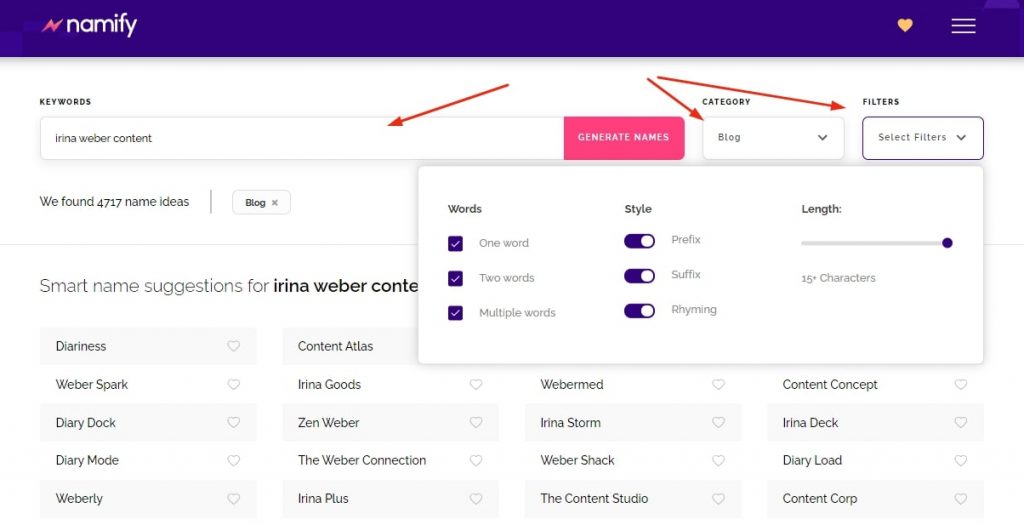
3. Talk to your customers
As the website owner, your judgment regarding the website design may be biased. To objectively audit visuals, you should talk to people not involved in the website creation process. Your customers should do just fine.
There are different ways to collect customers’ feedback. You can organize surveys, polls, review sites, feedback forms, or Net Promoter Score (NPS). Ask them about difficulties they encountered while browsing your website, the parts that they like or don’t like, customer support, product quality, social media channels, and any other ideas on how to improve your brand.
You can create a form using Google forms and send it to your clients in an email. Consider rewarding them for their time to give their opinion: you can offer a freebie or a discount on their future purchase.
Another idea is to ask people for opinions on social media. That’s an easy way to collect feedback from a broad audience. The downside of asking for feedback on social media is that it’s usually possible to ask just one closed-ended question. Here’s an example from LinkedIn:
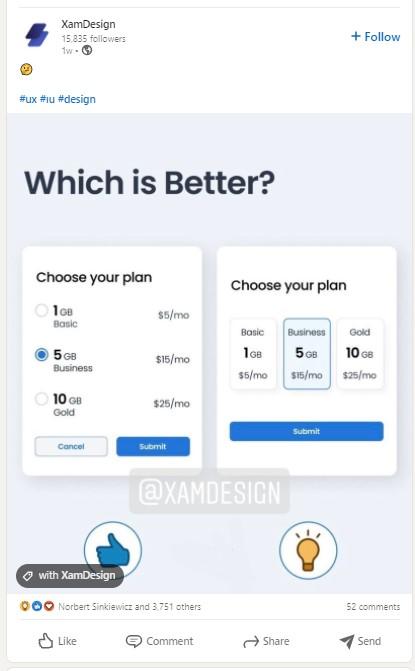
Make sure that customers can make or break your business. If you have a lot of satisfied clients, you are on the right way. But if you have many dissatisfied clients, you need to fix this big problem. This process can take much time to gather data. But without them, you can’t start improving your brand.
4. Track your competitors
Analyzing your competitors’ visual content can provide great insights into what performs best in your niche. For the most reliable data, benchmark your business against a successful company of comparable size and resources.
Evaluate the same elements that you analyzed on your site: branding, design elements, load time, adaption for mobile, content, SEO, conversions, leads, and presence in search results. You may also encounter some improvement ideas or visual elements that you don’t use. Take notes and examine these solutions on your website.
Monitor how your competitors talk to their customers, what tone of voice, messaging, and language they use. Check out their social media channels, paid ads, and marketing materials. You also need to track their SEO strategies, what keywords they are ranking for.
For this purpose, you can use WebCEO to get you SEO-driven data on your business and your rivals. It will research your organic traffic, website rankings, organic visibility, backlink data audit, and analyze data from Google Ads.
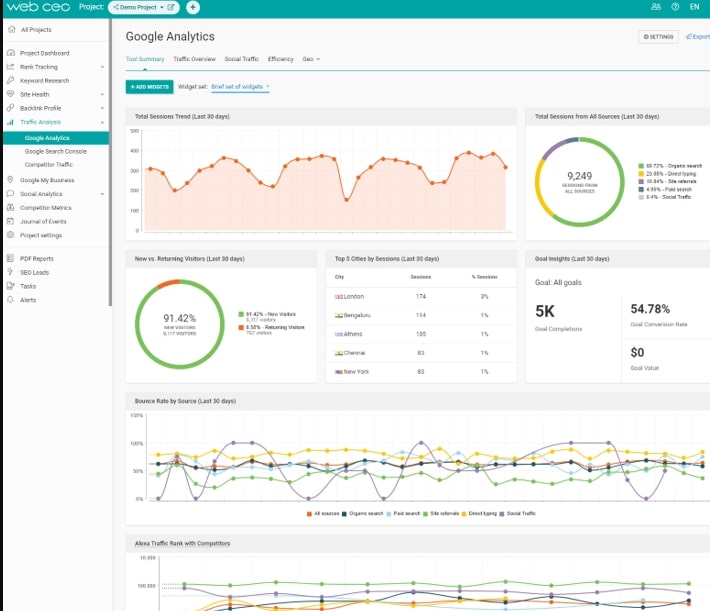
5. Audit your website
Once you’ve collected data from your customer surveys, competitor analysis, and manual internal evaluation, it’s time to run website analytics and figure out how your content is performing, how users are interacting with your website, and what countries are watching you.
You can support yourself with WebCEO to get historic and real-time data for your brand. Just enter your website URL, and you’ll receive a full report including data about Core Web Vitals, traffic, missing alt texts, and more! Select the metrics that are the most relevant to the goal of your visual brand audit. For example, if your goal is to improve user experience, pay attention to Core Web Vitals.
Another helpful tool is Google Analytics to inspect metrics such as bounce rate, conversions, or pageviews. The collected data will provide you with a broader understanding of what to improve to achieve the conversion goals set at the beginning.
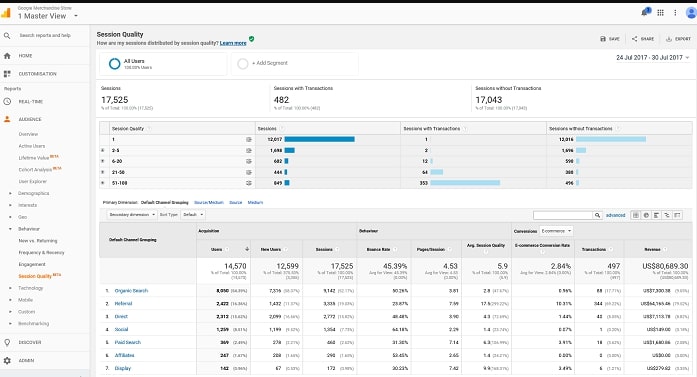
6. Review sales results
Reviewing sales results is crucial to identifying customer behavior patterns. Some pages may convert better for a number of reasons, e.g., the images that you post on the product page. All insights regarding your customer buying behavior and industry trends should be included in your brand visual audit.
According to this research, 360º images of your products boost conversions – is it true in your case? You need to look at your sales, pricing, how you deliver on your brand promise, and identify how your competitors are launching new products. Try to identify the best-performing product pictures and determine which ones may affect sales.
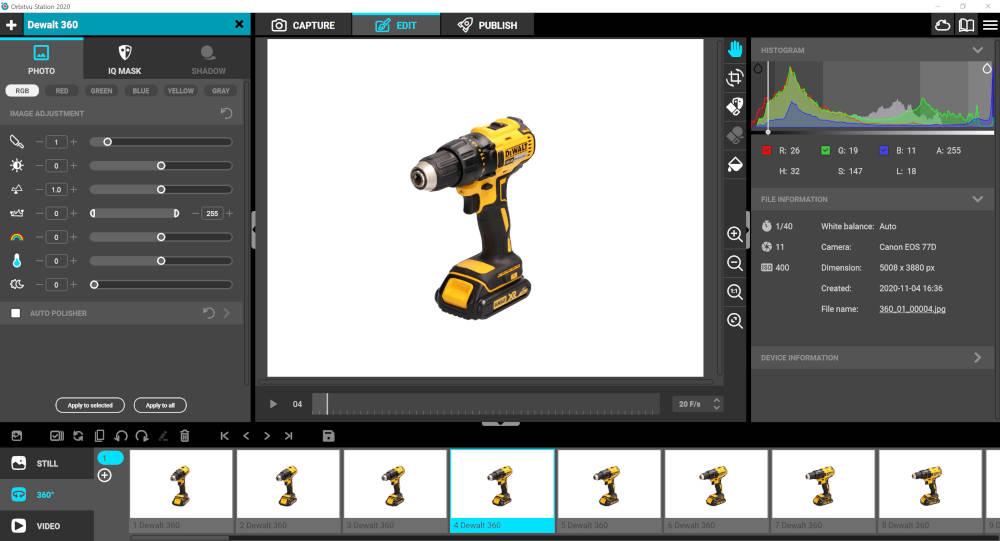
With Push Monkey, you can customize your branding, identify visitors that abandon your conversions funnel, and nurture them with content marketing. The best thing about this tool is the segmentation option to personalize notifications based on previous interactions with the website. Moreover, you can integrate it with many platforms, including WordPress, Shopify, Joomla, Magento, and many more.
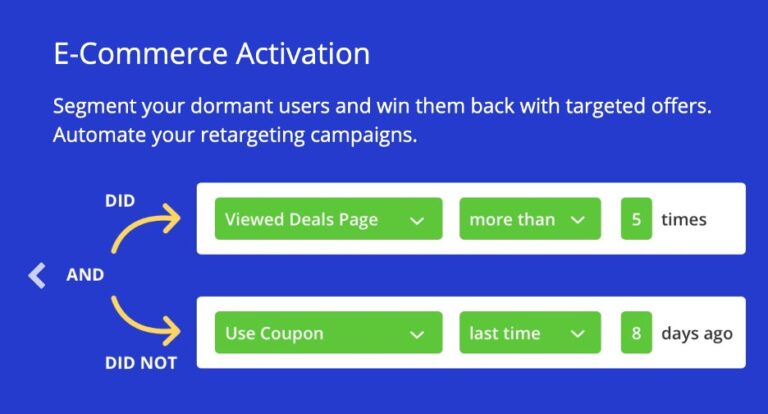
7. Create an action plan
Right now you have a list of different ideas and action points on how to improve your brand. Whether it is a marketing strategy, branding, social media, etc. It is high time to create an action plan to follow with your team or on your own.
You can divide your plan into two sections: long-term goals and quick fixes. For example, a quick fix can be the deletion of product pictures that prove to affect sales. A long-term goal will take more time to fix than a single click, and it may require cooperation between different specialists or even teams.
If the results of your brand audit reveal that 360-degree product pictures enhance sales, you’ll need to cooperate with a professional photographer to prepare this kind of visuals for every product. Make sure to set yourself deadlines for completing all of the listed tasks.
8. Monitor your changes
Once you’ve made changes to your brand, start monitoring the results of your work. Depending on the changes you have made, it is essential to keep an eye on your social media engagement, brand reputation, customer feedback, conversions, CTR, sales, email campaigns, and changes in ROI.
Ask your customers if they meet any issues with some aspects of your brand. You can also conduct an A/B test to evaluate all your changes. So, if these improvements helped you increase sales, traffic, and discoverability for your brand, it means that you properly evaluated your website.
Final Words
A visual brand audit is a time-consuming task that requires manual internal evaluation, customer feedback, competitor research, and technical check-up. The time and effort you devote to the assessment will bring positive results such as higher sales and traffic. I hope you will find everything here to conduct an effective brand audit.






